India explained in 25 maps
India is a country located in South Asia. It is the 2nd-most populated nation, and the 7th-largest country by land area.
Modern humans appeared on the Indian peninsula from Africa no later than 55 thousand years ago. Initially, in diverse forms of isolation as hunter-gatherers, their long occupation has made the subcontinent highly diverse, second only to Africa in human genetic variation.
Settled life appeared on the peninsula in the western boundaries of the Indus River basin 9 thousand years ago, developing slowly into the Indus Valley Civilisation of the 3rd millennium BCE. By 1.2 thousand BCE, an ancient form of Sanskrit, an Indo-European language, had spread into India from the northwest, exposing the Rigveda language and registering the dawning of Hinduism in India.
In the early medieval era, Christianity, Islam, Judaism, and Zoroastrianism put down roots on India’s southern and western seashores.
In 1858 India became a British colony. In 1947 India was split into a Hindu-preponderance Dominion of India and a Muslim-preponderance Dominion of Pakistan.
Table of Contents
- 1. Indian States and Union territories
- 2. The population of some Indian States rivals that of Brazil
- 3. Population density
- 6. Fertility – births per women
- 7. Languages of India
- 8. Illiteracy issues
- 9. Hindi is the largest religion in India
- 10. India has one of the biggest Muslim population in the World
- 11. The Human Development Index lags far behind developed
- 12. What Indians are googling about their states
- 13. Indian cities are set to become monstrously big
- 14. Mumbai is the biggest city in India and the second largest in the world
- 15. Where are all the baby girls?
- 16. Polluted cities
- 17. The partition of India
- 18. Cuisine
- 19. Moving abroad
- 20. Defecating in the open
- 21. Sometimes more people show up at an event in India than there are people in the Netherlands
- 22. Immunization of children in India is still a big problem
- 23. Dowry deaths in India
- 24. Bollywood still has some catching up to do
- 25. Indian states by percentage of Vegetarians.
1. Indian States and Union territories
India is a federal union incorporating 28 states and eight union territories. The map below shows literal English meanings of the names of Indian states.
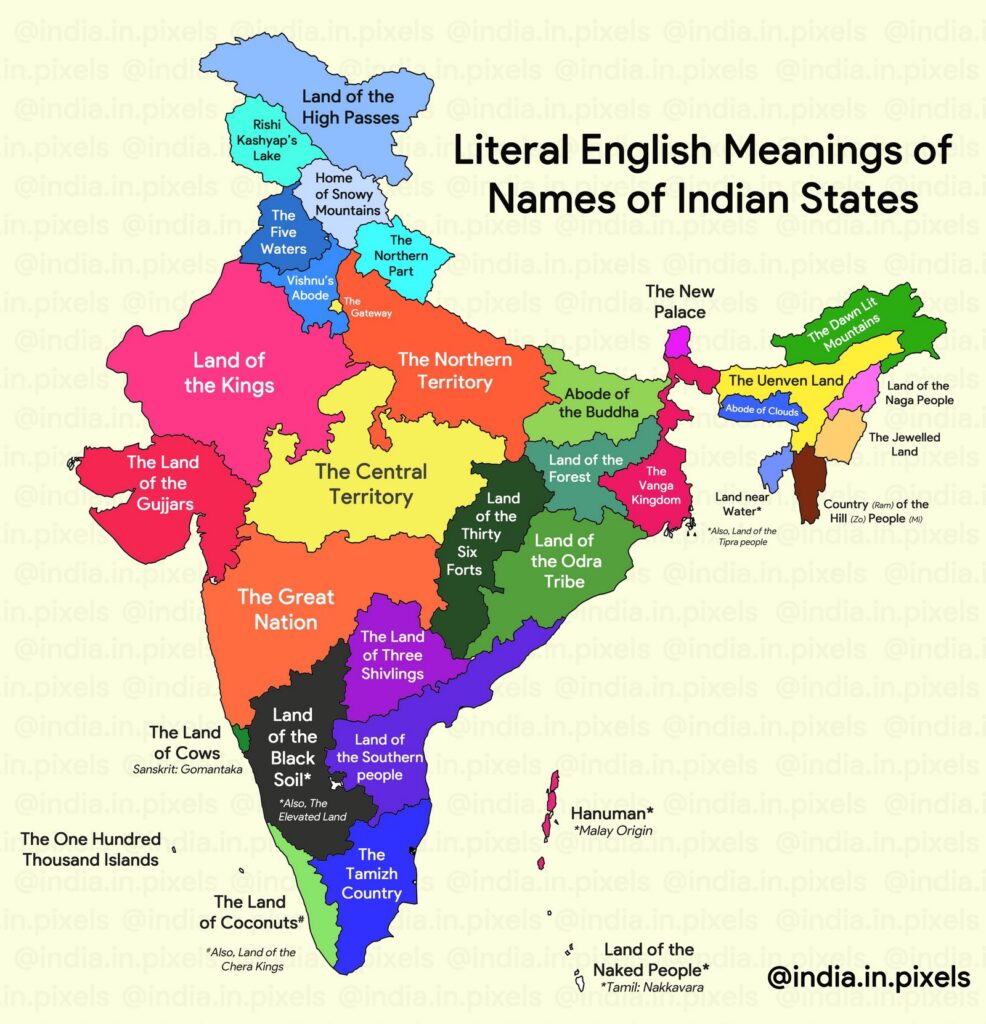
The lowest population has the Indian state of Sikkim (611 thousand people), and the highest population is the state of Uttar Pradesh (200 million people).
2. The population of some Indian States rivals that of Brazil
What better way to start this series of maps of India than looking into the country’s population? Indians represent 17.6% of the human race; that’s right, almost every 5th person in the world is Indian. There are so many people there that the entire population of countries matches just individual states. And not just any countries, but huge ones in their own right like Brazil, Mexico, and the Philippines, to name just a few.

3. Population density
India’s population density is one of the highest in the world. Some countries have higher densities, but India is the most densely populated, more enormous country except Bangladesh. If we apply that density to the entire world, 54 billion people would be huddling for space 🙂 As shown on the map, northern states like Uttar Pradesh, Bihar, and West Bengal are highly populated, with densities running up to around 1000 people per square kilometer.
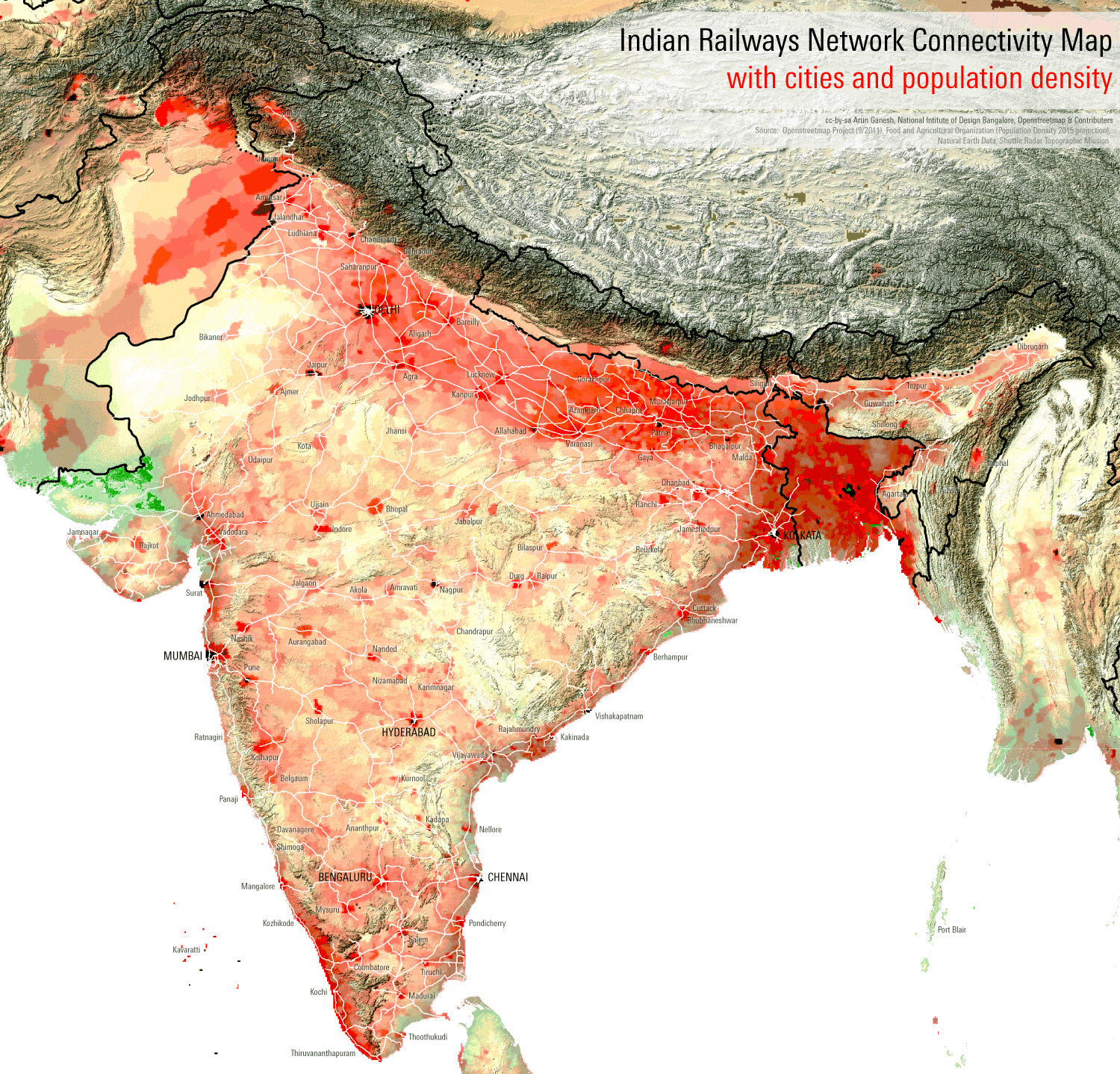
4. Etymologies of Various Indian Cities
Many Indian city names have fascinating etymological origins rooted in history, mythology, geography, or local languages. These names often reflect the cultural and linguistic diversity of India.
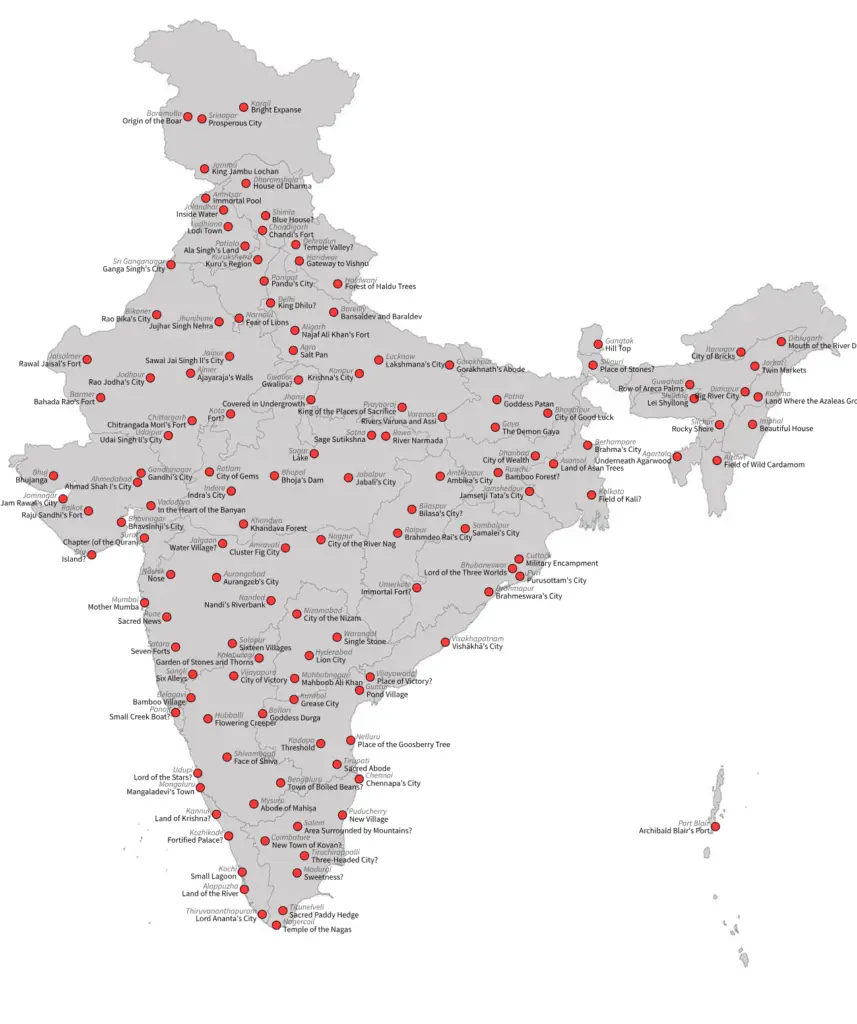
5. Most common suffixes for place names in India
Many Indian place names feature common suffixes that often provide clues about the nature or history of the location. Here are some of the most common suffixes found in Indian place names:
- “-pur” or “-pura”: Means “city” or “town” in Sanskrit. Examples include Jaipur, Nagpur, and Manipur.
- “-bad” or “-abad”: Of Persian origin, meaning “inhabited place” or “city”. Examples are Ahmedabad, Hyderabad, and Allahabad.
- “-nagar”: Means “town” or “city” in Hindi and many other Indian languages. Examples include Gandhinagar and Bhilainagar.
- “-garh”: Means “fort” or “fortress”. Found in names like Chandigarh and Aligarh.
- “-patnam” or “-pattanam”: Means “city” in Telugu and Tamil. Examples include Visakhapatnam and Masulipatnam.
- “-ganj”: Of Persian origin, often indicating a marketplace. Found in names like Shahganj and Muzaffarganj.
- “-wada” or “-vada”: Means “enclosure” or “inhabited place” in Marathi. Example: Ahmednagar.
- “-kota” or “-kot”: Means “fort” in many Indian languages. Examples include Rajkot and Sialkot.
- “-gram” or “-gaon”: Means “village” in Hindi and other languages. Often found in smaller town names.
- “-palli” or “-pally”: Means “village” in Telugu and Tamil. Common in South Indian place names.
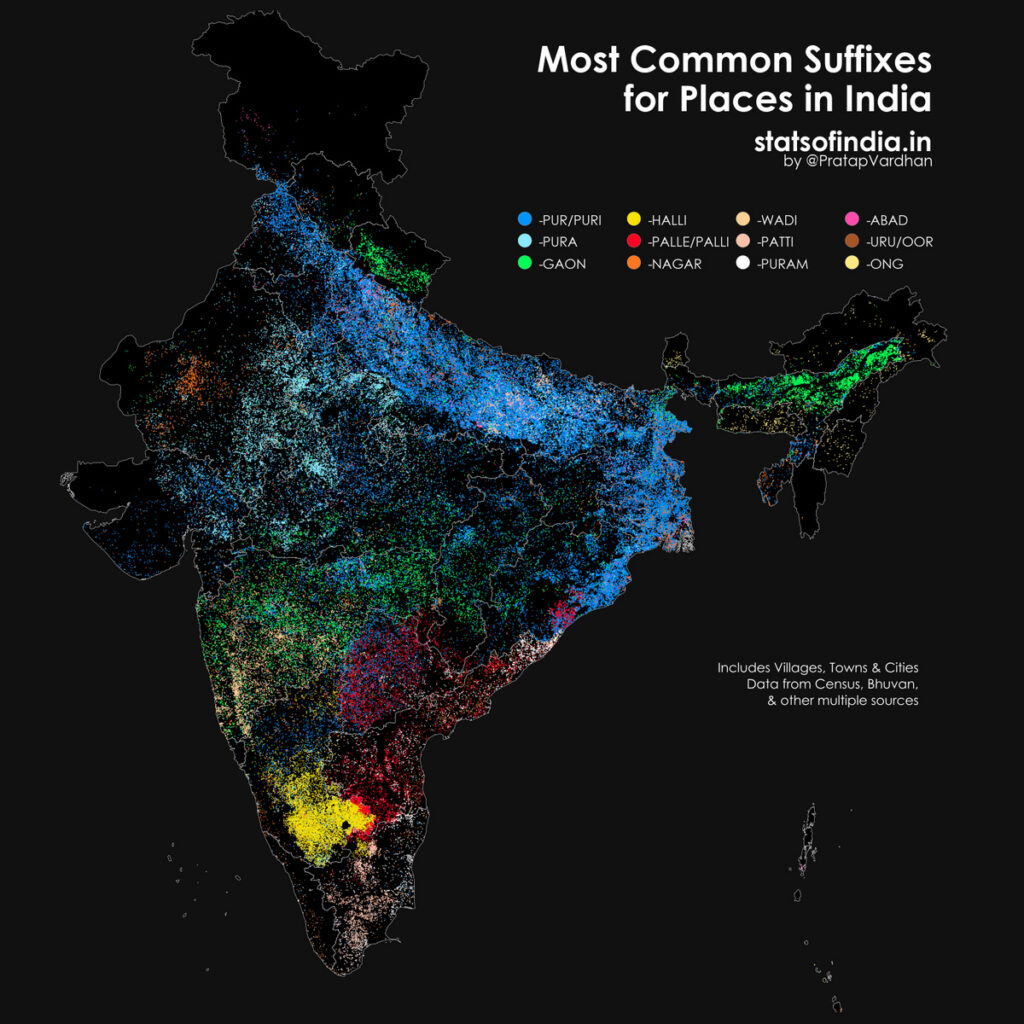
These suffixes often reflect the historical, cultural, or geographical context of the place. They can indicate whether a place was historically a fort, a market town, a village that grew into a city, or a planned urban development. The variety of these suffixes also showcases the linguistic diversity of India, with influences from Sanskrit, Persian, Arabic, and various regional languages.
6. Fertility – births per women
Now, this map could uncover something you might not have known – there are vast areas of India where fertility rates are surprisingly low. Much of the south cone of the country actually has fertility rates similar to European countries. Large parts of Kerala can be compared to Germany, which, based on projections, will face demographic problems unless that fact changes or accommodates a substantial number of immigrants.
The same is happening in India, where many people from northern states migrate to the South. According to some reports, the fact that the North still has much higher fertility rates is set to propel India’s population over China’s by as early as 2022.

7. Languages of India
As in much else, India is highly diverse when it comes to languages as well. While Hindi is the most spoken language in the country, it is by no means as prevalent as North Indians might think. Especially in the South, many people do not understand or speak Hindi at all. That goes for all levels of society, including the educated.
The map above only shows languages that had more than 10 million speakers in the 2001 census, and its geographic distribution is not exact with all of them.

8. Illiteracy issues
Understandably with such an enormous population, anytime we bring absolute numbers into the discussion, the figure will be startling. Having said that, the estimated number of illiterate people is over 300 million people. Let that sink in for a moment… That almost matches the entire population of the USA!
Obviously, this is an issue in dire need of addressing. While India was ruled by the British, literacy was stagnating, and only after the country gained independence in 1947 did progress start. It went from slightly lower than 20% in 1947 to 74% in 2011. On the other hand, China increased its literacy rate to 95% from a very similar base of 20% back in the 1950s.

9. Hindi is the largest religion in India
There are five major religions in India, but most Hindus are Hindu. The map below shows the largest religion in India by the district.
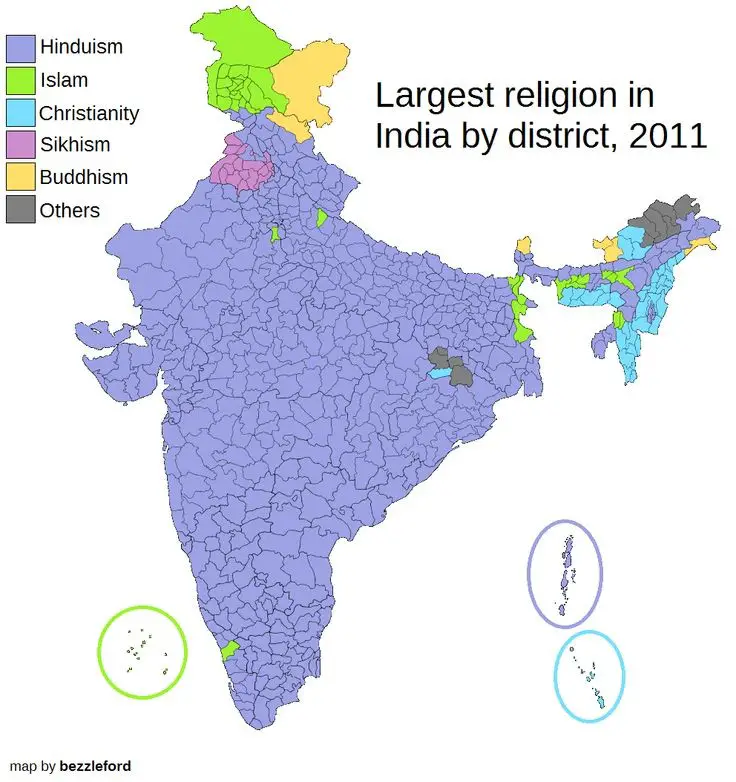
10. India has one of the biggest Muslim population in the World
There is no way to talk about India without touching upon religion. Hinduism is the prevalent belief system that 80% of the population adheres to. What’s perhaps more interesting is that India is home to the third or, by this point, maybe even the second most significant number of Muslims in the world. Christians, Buddhists, Jains, and Sikhs add up to another 5%.

11. The Human Development Index lags far behind developed
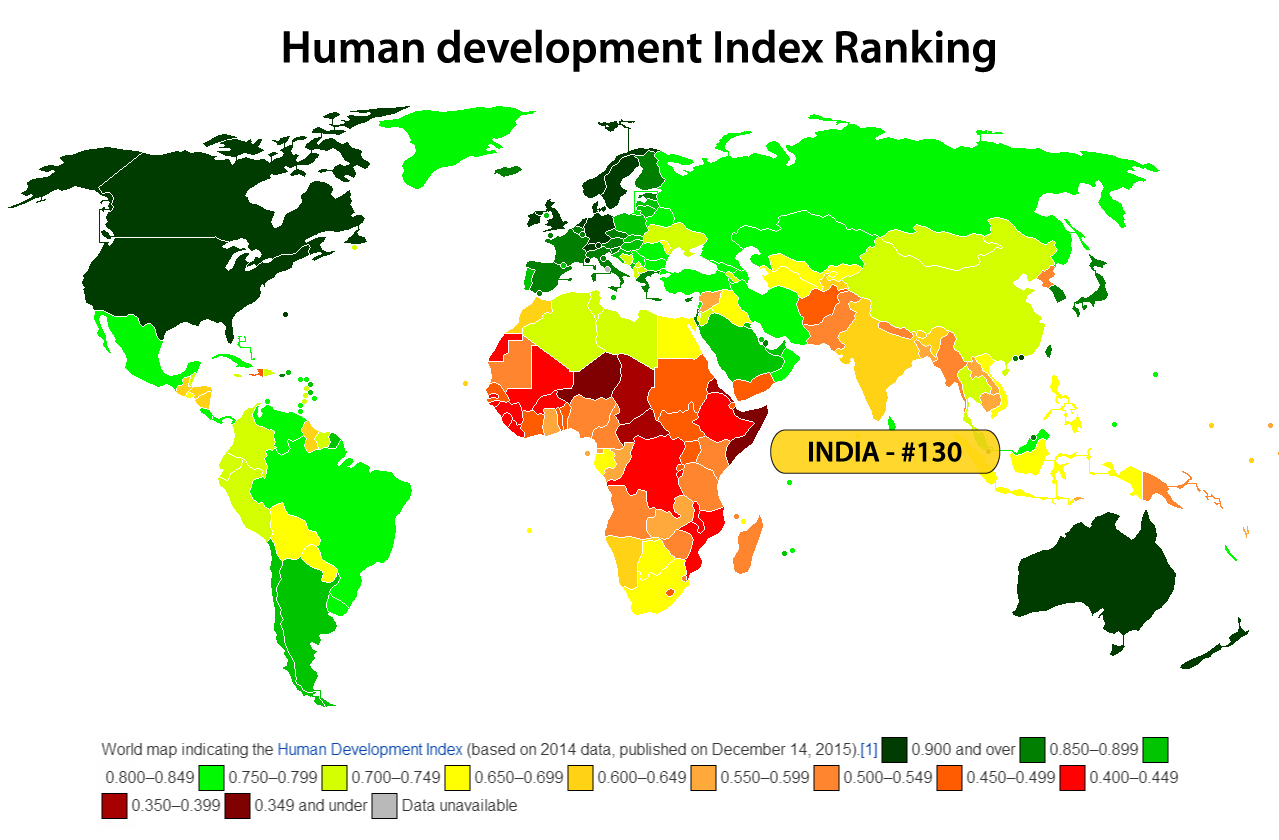
12. What Indians are googling about their states
Now, this goes into the category of fun maps of India! It’s created based on what Indians usually search for on Google when looking up the phrase “Why is ‘state name’….”. For example: “Why is Gujarat a dry state.” Google suggestions enable you to view the most searched-for terms, and it seems like many an Indian would like to know why alcohol is banned in Gujarat. Well, it looks like Mister Gandhi has some explaining to do :).
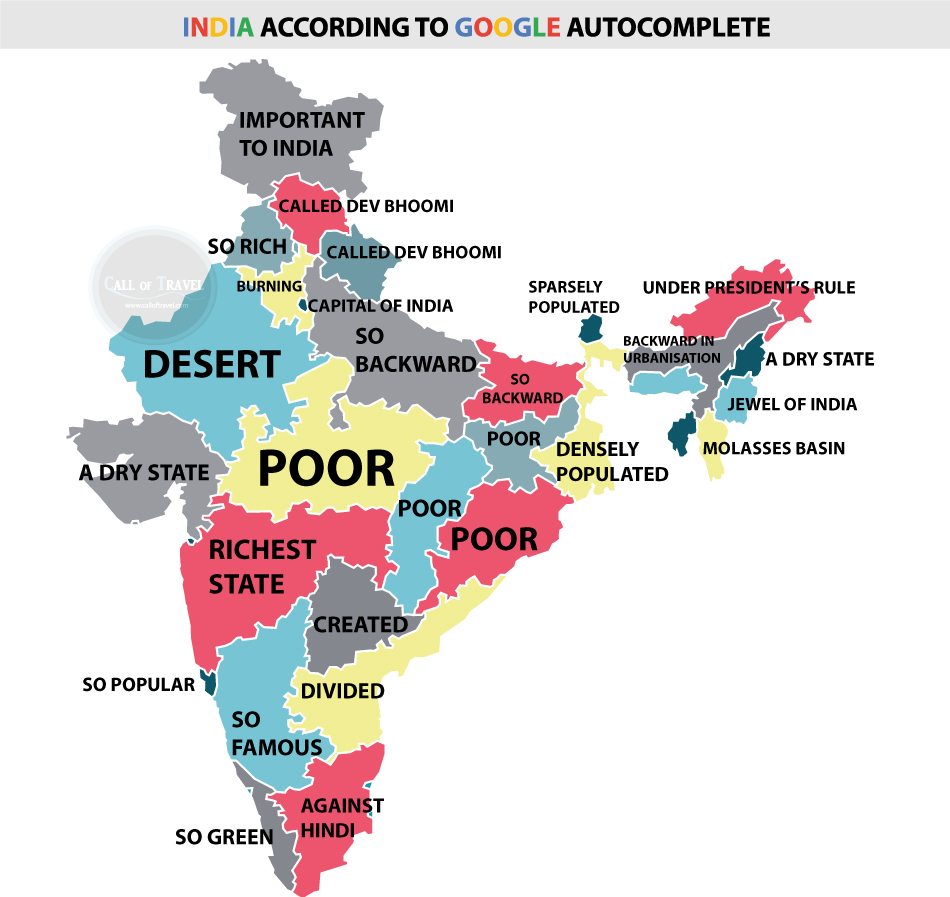
13. Indian cities are set to become monstrously big
India is still largely rural and what that means for the future are some enormously big cities! Currently, urbanization rates stand at around 30% but are set to increase every passing year. A study published by the University of Toronto forecasts that by 2050 the population of Mumbai will increase to 42 million, New Delhi to 36 mln, and Kolkata to 33 mln.

14. Mumbai is the biggest city in India and the second largest in the world
Mumbai, formerly Bombay, is Maharashtra state and India’s financial capital. The population was estimated to be 22 million in 2015. Delhi ranked second among the top 10 largest cities in India metropolis and the national capital with 18,686,902 as reported in 2016. Bangalore, officially called Bengaluru, is Karnataka’s capital and the third most populous Indian city with 11,556,907 (2016). Hyderabad, Andhra Pradesh’s capital and one of the top 10 largest cities in India, the city’s population is 10.1 million (2016). Ahmedabad city population is 66,342,236 (2016). Chennai is Tamil Nadu’s capital, with 8.2 million (2016). Kolkata is West Bengal’s capital, considered the most important Indian city. With a population of 5 million, it has been a center of culture, education, and industry. Surat ranks 8th in India’s most populated city. According to the census in 2016, the population was 6 million. Pune is Maharashtra’s second-biggest city. With a population of 5.9 million, it is home to Hindi, Marathi, and English-speaking people. Jaipur is Rajasthan’s capital, founded by Maharaja Sawai Jai Singh II in 1727. It has a population of 3,548,512.

15. Where are all the baby girls?
These statistics might imply there is something rotten in certain states of India. The typical Indian saying “raising a daughter is like watering your neighbor’s garden” illustrates a bit where the roots of the issue lie. “May God gives you eight sons,” a traditional Hindu wedding blessing and the notorious sex determination ads that used to be run by clinics saying “Invest only Rs. 500 now and save your precious Rs. 50,000 later” or posters distributed by an ashram in Udaipur with the message “Don’t throw away, give them to us” just further cement the deep-rooted preference for sons in the Indian culture and honestly sound like a freaking horror story.
While there is no apparent scientific consensus about the typical sex ratio of boys to girls at birth, it is thought to be somewhere around 105 boys for every 100 girls. In India, it stood at 109 in 2011 when the last census was carried out. In Haryana and Punjab, that ratio shoots up to 120 boys per 100 girls. What does this point to? Female infanticides and selective abortions, unfortunately.
And why you might ask would sons be so preferred to daughters that parents would commit such atrocious acts? Dowry and other material gains… In India, the bride’s family traditionally needs to pay a dowry to the groom’s family. After the wedding, the woman joins the husband’s family and more or less becomes their daughter. Although dowry was banned by law in India back in the 1960s, the practice is still very much alive and kicking.

16. Polluted cities
As I have previously so subtly put it in my India is a spectacularly dirty blog post, the country has a massive problem with all sorts of environmental degradation. According to WHO’s monitoring of air quality worldwide, a whopping 6 out of 10 most polluted cities in the world are in India. A traveler will be confronted by most scenes of trash lying around absolutely everywhere. Let’s all hope that the Swachh Bharat clean-up initiative launched by the Government of India will genuinely have some tangible effects.

17. The partition of India
When India became a modern country back in 1947, there were a few hick-ups. Fourteen million people were displaced, and 200,000 to 2,000,000 killed kind of hick-ups. The British Indian Empire was divided into two sovereign states: the Dominion of Pakistan and the Union of India.
Before the partition finally materialized, riots and subsequent migration of people on an enormous scale happened. Hindus and Sikhs were heading to India, and Muslims were heading for Pakistan and what would later become an independent country, Bangladesh. As you might imagine, these wounds are still not healed, illustrated by constant tensions between India and Pakistan, both nuclear nations, by the way.

18. Cuisine
By now, you’re probably thinking this guy is just bashing India. Well, the thing is, you don’t need to focus on any of the aspects I’ve highlighted thus far on your trip to India. But the fact is, India is a big country with significant and fundamental problems, and travel is as much about understanding the bigger picture as it is about sightseeing, at least for me it is.
But now, for something India can quickly be praised and celebrated for – FOOD! Indian cuisine offers so much, from street food to superb upscale restaurants. Different regions serve up other dishes, so make sure you check out this map and try as many delicacies as possible.

19. Moving abroad
Indian diaspora can be found worldwide, and in some countries, like Qatar, they almost outnumber the locals, while in Kuwait and Bahrain, they come second, only behind the locals.
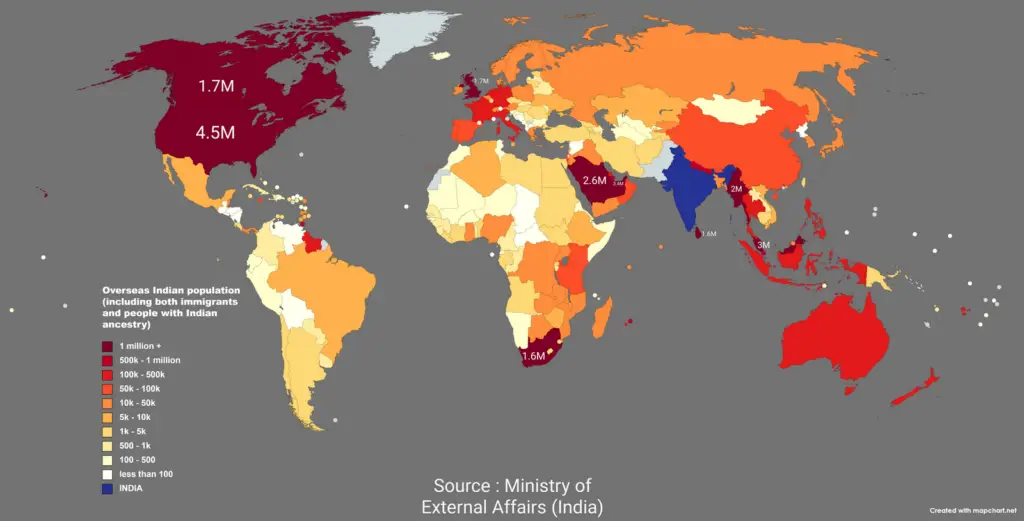
The total number of overseas Indians is 21,909,875; 10.24% (2,245,239) live in the United States.
Top 10 countries by number of Indians settled abroad
| Rank | Country | Number of overseas Indians | % |
|---|---|---|---|
| 1 | United States | 2,245,239 | 10.24 |
| 2 | Malaysia | 2,050,000 | 9.35 |
| 3 | Saudi Arabia | 1,789,000 | 8.16 |
| 4 | UAE | 1,750,000 | 7.98 |
| 5 | Sri Lanka | 1,601,600 | 7.31 |
| 6 | United Kingdom | 1,500,000 | 6.84 |
| 7 | South Africa | 1,218,000 | 5.56 |
| 8 | Canada | 1,000,000 | 4.56 |
| 9 | Mauritius | 882,220 | 4.02 |
| 10 | Oman | 718,642 | 3.28 |
20. Defecating in the open
You might say now that’s just disgusting, but it is what it is. And it mostly lacks proper infrastructure. According to a Hindustan Times report, people are shamed by publicly circulating photos of individuals relieving themselves in the open. I believe the Government needs first to take care of proper infrastructure and launch awareness campaigns, starting with adequate education early on in schools.
The following case illustrates what I mean by the need for education and awareness. Anil Prajapati, chairman of the Gujarat Sanitation Development Organisation, said by the BBC why people still don’t want to use public toilets in Ahmedabad: “Some of these people fear that there are witches inside or that their children will be kidnapped.”
While I do agree witches are a legitimate concern, I think there are way cooler places for them to hang out 😉

21. Sometimes more people show up at an event in India than there are people in the Netherlands
Crowds are India’s forte; you can’t take that away from it. Nobody does crowds better, nor does anybody know how to queue better. Standing in line in India is more like ordering a drink in a packed bar. There’s just no room for being shy; in fact, there is no personal space to talk of. As another of my friends again eloquently put the Indian queue is called the ass to dick formation.
As seen on the map, the 2013 Kumbh Mela is the largest gathering of people in history, with an estimated 30 million people attending in one day. It’s a Hindu pilgrimage that occurs every 12 years in one of the four holy sites. People traditionally come to bathe in the sacred rivers.

22. Immunization of children in India is still a big problem
Along with some African countries, India has the lowest percentage of unimmunized children.

23. Dowry deaths in India
Now, what’s a dowry, and what’s a dowry death? A dowry is a financial transaction in the bride’s family’s direction to the groom’s family. Dowry death happens when a woman is murdered or driven to commit suicide by her husband and/or his family while trying to extort a dowry from her family.
Dowry is still a part of the Indian culture, and the above map illustrates where dowry deaths are most prevalent in India. For example, in India’s most populous state, Uttar Pradesh, around 2500 women were killed or committed suicide due to dowry in 2012.

24. Bollywood still has some catching up to do
Bollywood is enormous; there is no doubt about it and not only in India, but increasingly so in other parts of the world. While its top-grossing movies currently can’t even begin to compare with Hollywood’s top success stories, its significant stars earn top dollars. In fact, according to Forbes, 3 out of 7 top paid actors in 2015 came from India: Amitabh Bachchan, Salman Khan, and Akshay Kumar.
However, India is not only Bollywood, which mainly refers to the Mumbai-based, Hindi language cinema production. The southern part of the country has a strong movie production industry in its own right, with Telugu (Tollywood) and Tamil (Kollywood) movies grossing not that far behind their more famous northern brother.

25. Indian states by percentage of Vegetarians.
India has more vegetarians than the rest of the world put together. The reasons for Indian vegetarianism are mainly cultural. According to a Nation survey, about 30% of Indians are vegetarians. Vegetarianism was most prevalent among the diverse communities among the Swaminarayan Community, Brahmins, Lingayat, Vaishnav Community, Jain community, Sikhs, and less frequent Muslims (~3%) and inhabitants of coastal states. The map below created by @india.in.pixels shows the percentage of vegetarianism by the Indian state.
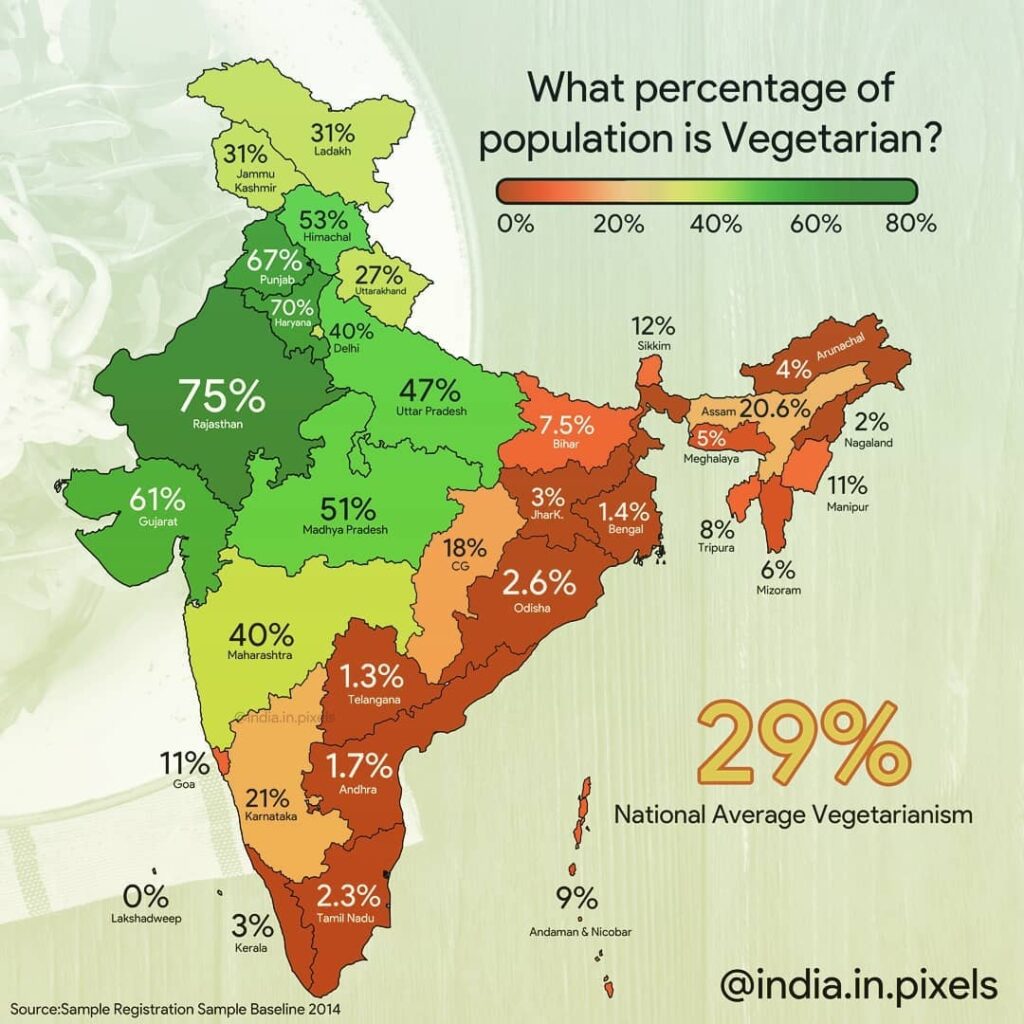
Explore India’s Geography:


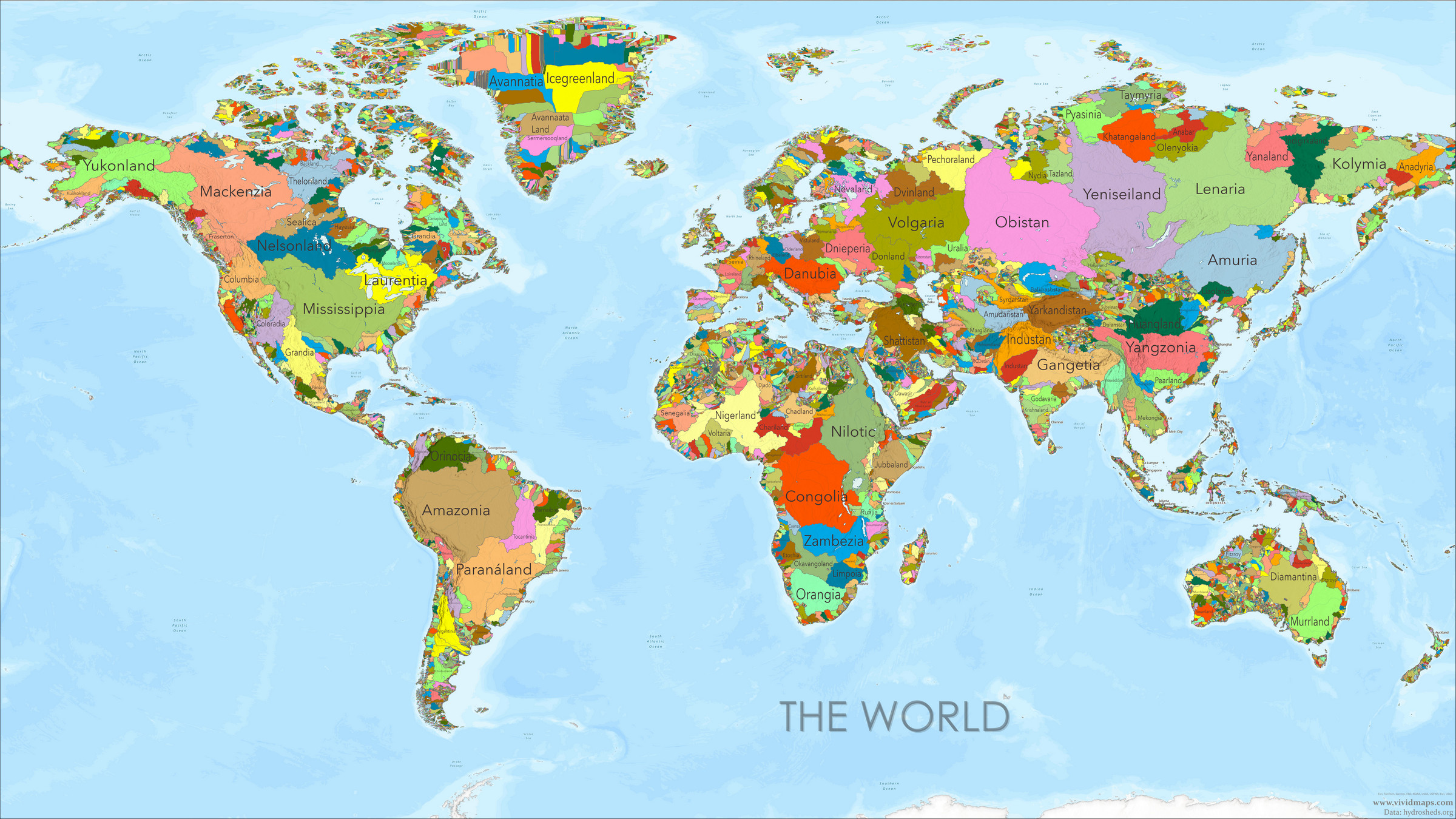




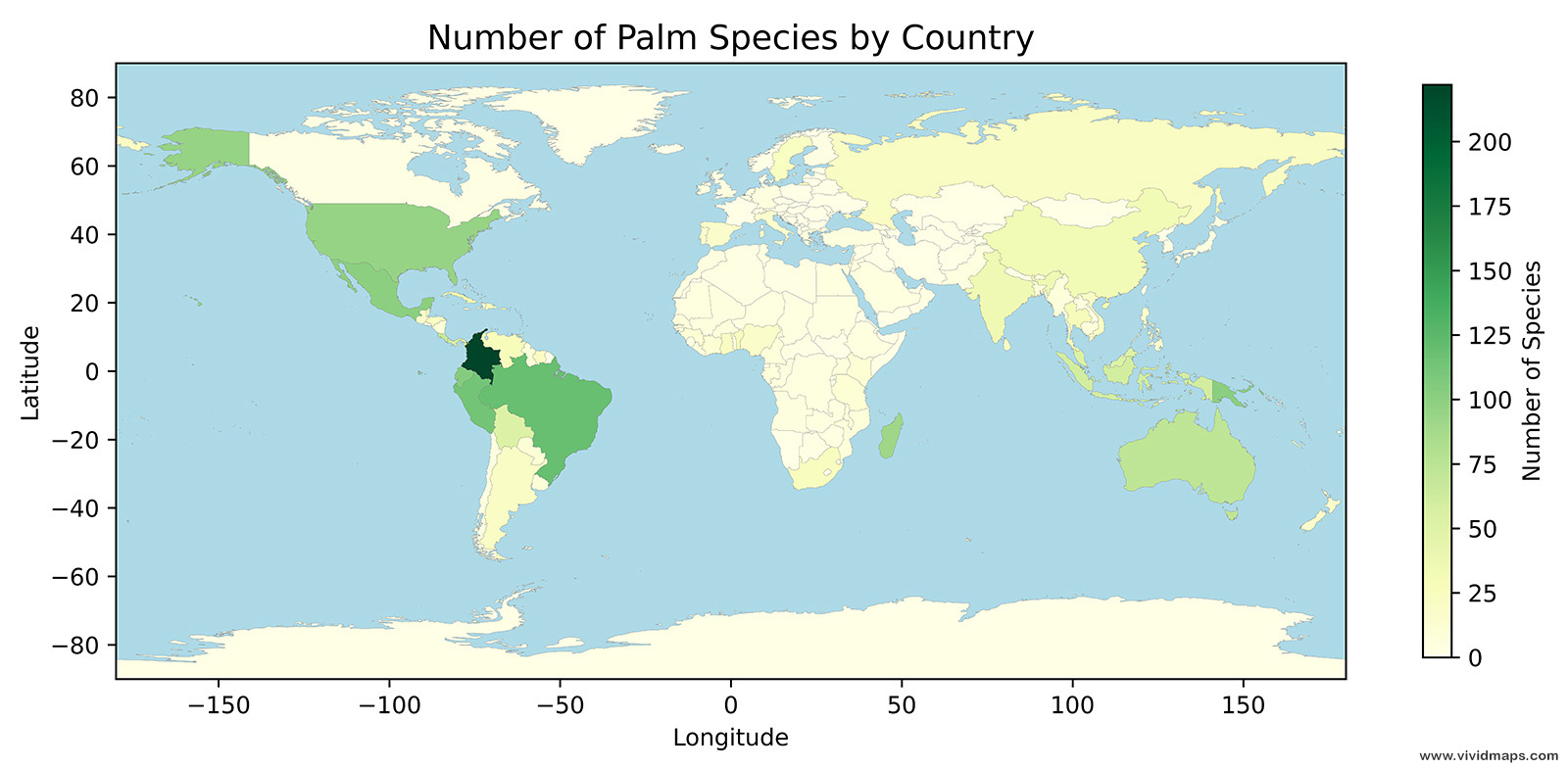

i hope you like my feedback alex!!
feedback is a weird word right? like if someone already ate it why would you FEED IT BACK??
i like this this is good and interesting keep up the good work